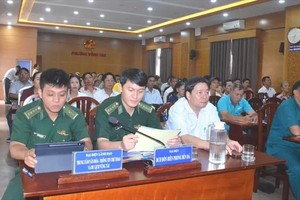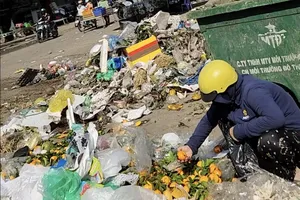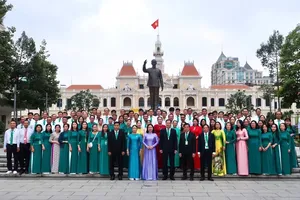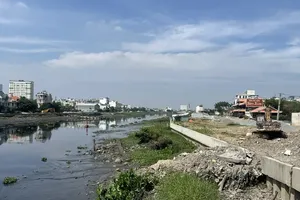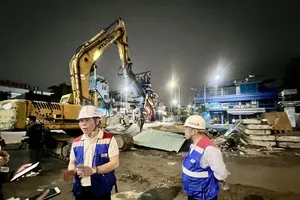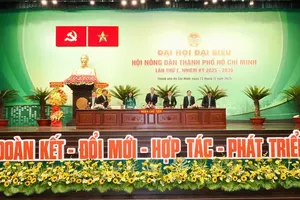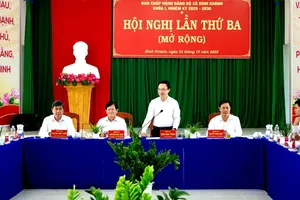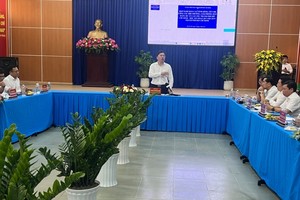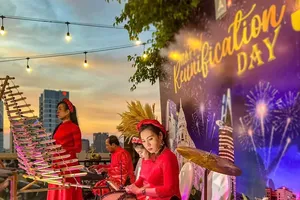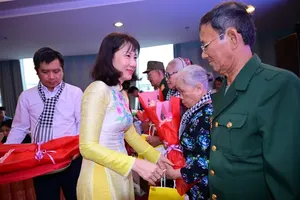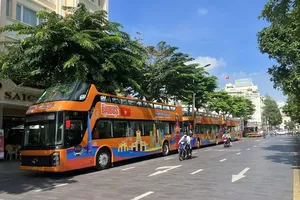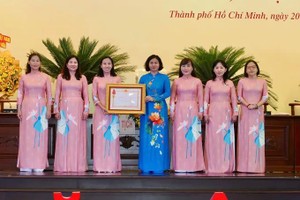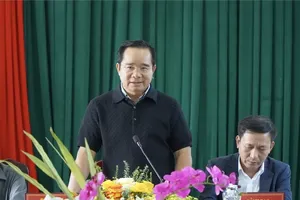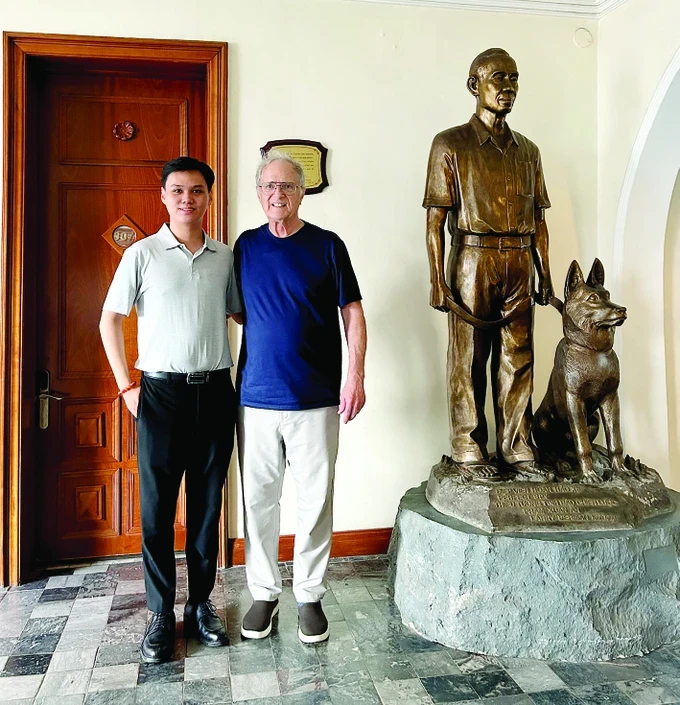
On a journey to revisit the Mangrove Forest revolutionary base in Can Gio District of HCMC sat a contingent of overseas Vietnamese journalists from Belgium, Germany, the US, and Canada participating in the commemorative Press Week, including two American figures, namely Tom Fox, a former Time magazine correspondent, and Lance R. Woodruff, who was stationed in Saigon from 1966 to 1968.
Amidst the conversation, Lance unexpectedly produced a cherished photograph of Thich Quang Duc monk. The haunting image of the monk’s self-immolation on June 11, 1963 in protest against the then government’s suppression of Buddhism, remains a powerful and enduring memory for Lance. In a striking moment of serendipity, Tom Fox then revealed his own photograph, a youthful image of himself alongside the very same Thich Quang Duc.
In May 1968, fate intervened, stranding Lance R. Woodruff in Bangkok (Thailand), preventing his return to Saigon for the historic April 30, 1975. This absence remains a heartbreaking regret for the now 82-year-old. “Now, with the approach of the jubilant 50th anniversary, invited or not, I would have returned. I wanted to be here to celebrate fifty years since the war’s end.”
Since 1975, Lance has made numerous journeys back to Vietnam, including visits to Dien Bien Phu and, on one occasion, taking his son to explore the Cu Chi Tunnels.
Tom Fox possessed a distinct advantage over his colleague and fellow countryman Lance thanks to his fluency in the Can Tho dialect of Vietnamese. On the way to Can Gio District, Tom proudly displayed pages of meticulously typed Vietnamese, the font deliberately oversized and capitalized “to practice reading each sentence with fluidity”.
A mere glance at one page prompted him to recite two evocative lines from The Tale of Kieu: “Tram nam trong coi nguoi ta / Chu tai chu menh kheo la get nhau” (A hundred years in the realm of human life / Talent and fate are cleverly disliked by each other). With the air of a seasoned lecturer, Tom elaborated, “This verse reminds us that destiny is not always within our grasp. But the essence of a meaningful life lies in how we interact with one another.”
Tom’s collection of photographs brought back to Vietnam this time included a more contemporary image – a snapshot taken at the Continental Saigon Hotel alongside the statue and commemorative bronze plaque honoring the clandestine activities of intelligence Major General Pham Xuan An before 1975.
During the 1970-1972 period, Tom Fox forged a unique bond with the ‘perfect spy’. “He was a man of few words, incredibly gentle”, Tom recalled. “I, in my youthful fervor, often urged him to adopt a more vocal anti-war stance. Yet, he consistently advised patience, urging me to wait, assuring me that Hanoi would ultimately prevail.”
He then responded with palpable enthusiasm: “Having been back in HCMC for just 24 hours, I am overcome with joy. In public spaces, I see citizens proudly displaying the two-toned flags of the National Liberation Front of South Vietnam. For me, this is a powerful symbol of the Vietnamese family reunited. It evokes the feeling of siblings returning home, embracing their shared heritage and deepening their bonds of affection. After fifty years, Vietnam should showcase to the world, and to its own people, a unified voice, a shared love, and the collective strength of solidarity and unity. I am filled with optimism for Vietnam's future trajectory.”
During an afternoon visit to the War Remnants Museum in District 3 on April 27, former Japanese reporter Nakamura Goro became the focal point of attention, his colleagues eagerly seeking photographs with him. He is the author of the starkly powerful photograph ‘Mangrove forest destroyed by chemical toxins during the war’ (1976), displayed in a large format on the museum’s facade. He graciously accepted the requests of numerous colleagues and visitors to pose beside his iconic work, a poignant memory continuing to unfold from Nakamura’s present.
Marianne Harris became the most visibly moved visitor on April 27, standing in front of the museum’s touching ‘Remembrance’ corner. This collection of Vietnam war photographs originated from a project of the same name by the legendary war photographers Tim Page and Horst Faas. Marianne was Tim Page’s wife; he passed away in England three years prior. Though grieving her loss, Marianne experienced a profound and unexpected reunion with Tim’s legacy amidst the commemorative atmosphere of this significant event in Vietnam.
Simultaneously, standing before the gallery of fallen war correspondents who perished during the Indochina Wars, former UPI reporter Kenneth Wagner (who covered Vietnam from 1969 to 1974) intently searched for a photograph of Sean Flynn, “because he was the son of the movie icon Errol Flynn”. Moments later, Kenneth excitedly pointed and exclaimed, “There’s Sean Flynn!” It was a moment that felt like a resurrection.
Another member of the delegation, David Brill, a former Australian reporter for ABC, was eager to share a personal treasure, proudly displaying a photograph taken with General Vo Nguyen Giap during the museum visit. David promised to share more invaluable archival material in the days to come. That evening, on the ninth floor of the Caravelle Hotel in District 1, during a gathering of Vietnamese and international war correspondents, David was once again seen sharing his cherished photograph with former reporter, director, and writer Xuan Phuong.
This resonated deeply with a proposal made by director Xuan Phuong herself. At the age of 96, she passionately championed a significant idea: “Why not combine our efforts to create a collective memoir of the heroic historical period half a century ago, a period of which we ourselves are living witnesses?”


